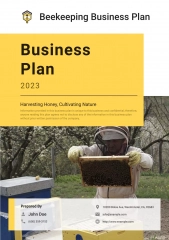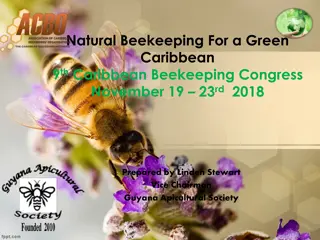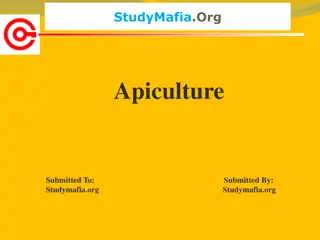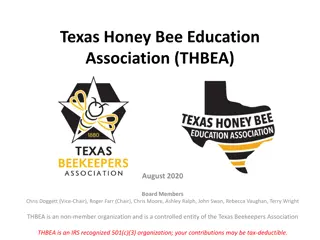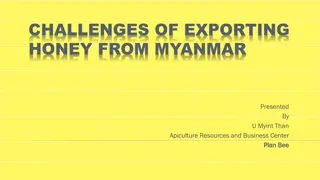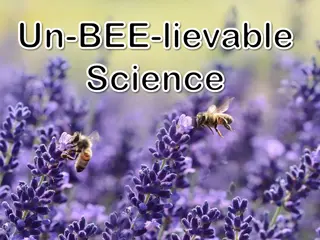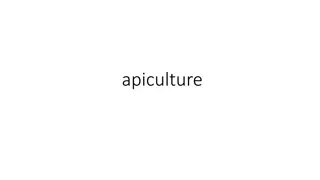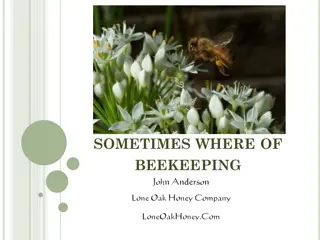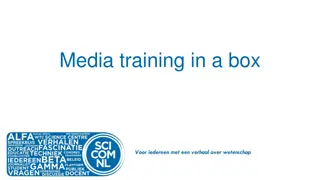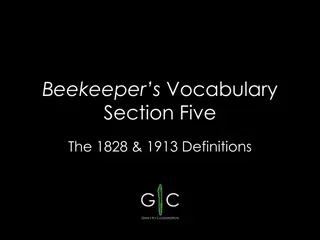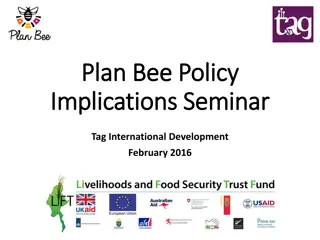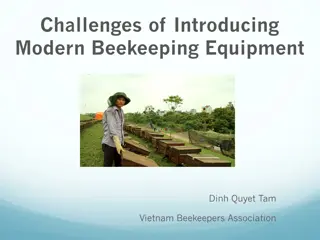Comprehensive Guide to Apiculture: Beekeeping Essentials and Best Practices
Introduction to Apiculture, covering topics such as requirements, equipment, seasonal calendar, bee classification, hive maintenance, honey harvesting, and bee product processing. Explore the world of beekeeping, the benefits of honey production, and the various uses of bee products for health and industry.
Download Presentation

Please find below an Image/Link to download the presentation.
The content on the website is provided AS IS for your information and personal use only. It may not be sold, licensed, or shared on other websites without obtaining consent from the author.If you encounter any issues during the download, it is possible that the publisher has removed the file from their server.
You are allowed to download the files provided on this website for personal or commercial use, subject to the condition that they are used lawfully. All files are the property of their respective owners.
The content on the website is provided AS IS for your information and personal use only. It may not be sold, licensed, or shared on other websites without obtaining consent from the author.
E N D
Presentation Transcript
A LECTURE ON APICULTURE (Beekeeping) Presented by O.ANDREW
MODULES ON BEE KEEPING TRAINING FOR BEE FARMERS
INTRODUCTION TO APICULTURE REQUIREMENTS OF APICULTURE Manipulations of bees and other colony Good record keeping Locations of bees Observation of bees/ behaviours Possession of bee keeping equipment Definition apiculture Definition keeping Genesis keeping Kind of bee keeping of of bee of bee
EQUIPMENT FOR REARING BEES AND MAINTENANCE SITE SELECTION What to look for when sitting apiary What to do to improvise condition for apiary Acquiring knowledge how to move hive when necessary Things not to be taking or present in the apiary Preparation to site an apiary Protective equipment Management equipment Harvesting equipment Field equipment
SEASONAL CALENDAR IN BEE KEEPING METHODS OF REARING Tradition technique Medium technique High technique Dearth season Build-up season Nectar-flow season Honey-flow season
CLASSIFICATION OF BEES ROUTINE MAINTENANCE Organization of bees Variation of bees Characteristics of bees Keeping hives on stands Keep an extra hive Keep a distance between hives Keep record of activities on apiary
HARVESTING AND PROCESSING OF HONEY BEE PRODUCTS Sign of present What to be put in place before harvesting Things to be look for in a honey ripped hive Things to be used for processing of honey and otherproducts Processing of the other product PRODUCTS AND USES OF HONEY BEE PROJECT Honey Wax Pollen Propolis Venom Young bee Hive air Others honey ripe/
INTRODUCTION Beekeeping also known as Apiculture is the rearing of the insect bee. The main reason for beekeeping is to produce honey. Bee honey is a natural sweetener easily digestible bychildren and adults. It provides an incredible punch of vitamins, minerals, enzymes, proteins and aminoacids.
USES OF HONEY Natural pure bee honey could be used for several curative purposes and it is highly recommended for those with various ailments such as: asthma boils whitlows, burns, cold/catarrh, severe coughs gastric ulcer hypertension, heart related diseases Libido menstrual problems, etc.
Honey is a readily tradable commodity and can realize cash with ease. It is becoming more marketable for its medicinal and cosmetic properties. Bee wax is a valuable by-product of honey production, used locally for making candles. Propols or glue, a gum-like substance with medicinal value and anti-biotic properties is alsoa marketablecommodity.
The greatest value of honey-glue lies in their capacity for plant pollination, thus, keeping bees can increase production of many crops. the fruit and seed Bee pollen is increasing being regarded as a product in its own right and may be harvested from hiveswith theaid of pollen traps. Its greatest value could be as a protein-rich food or local consumption.
Royal secretion used by the bees to feed their larvae. The larvae of a queen bee is fed on royal jelly only. jelly is a glandular Royal jelly can be collected from queen cells in the hive via a specialized operation and the jelly must becrop atall times. Royal manufacturing expensive beauty products and sold as aspecialized food product. jelly is used in
Bee venom can be collected by making the bees sting a latex rubber sheet stretched overawooden frame. It is used for medicinal purposes, sometimes immunize people who have developed allergies to bee stings and sometimes for conditions arthritis. to related to
The new technologies in modern beekeeping have made many people self-sufficient. The business can be combined with other farming activities. People are encouraged to own apiaries and derive maximum benefit from the venture because it is inexpensive to establish and highly rewarding economically.
GENERAL CONSIDERATIONS AND REQUIREMENT FOR APIARY/BEEKEEPING CLIMATE AND FORAGE: Plants nectar neither too hot nor toocold. To obtain honey crop, essential are periods there is flowering within 1km of the beehive. TYPE OF VEGETATION Any support including areas can bees. yield when most it areas vegetation- that is urban support a good it there when is that extensive
MANIPULATION OF BEES AND THEIR COLONY BEEHIVE A Honeybees naturally or introduced by humans, in all but the most environmental conditions. beehive suitable colonyof bees. A well-designed hive will shelter the adverse weatherand pests and will allow the honey to be harvested minimal disturbance to the bees. Good hive design makes it easier to manage the bees and honey. provides home a a exist either for extreme bees from with Expertise resources are more readily available to offer ideal conditions production. and other for honey harvest the
AVAILABILITY OF BEEKEEPING EQUIPMENT Top-bar hives: The Kenyan top-bar hive is a long hive normally made of timber and designed to take 28 top bars. The most important part of a top-bar hive is the top bar itself. Top bars should be made from any reasonable quality wood that is well seasoned so that it does not warp. Hardwoods, if available, will last longer than softwoods.
Langstroth: Langstroth beehive is the house built for easy manipulation and easy management beesand beecolonies. of the
Smokers A smoker is a device that enables the beekeeper to puff smoke into and around a beehive to drive bees out during harvest made from thin sheet metal formed into attached toa pairof bellows. a firebox and The bellows pump air into a vent at the base of the firebox so that smoke is forced funnel at the topof thesmoker. out of the
Hive tools A implement that is used to pry open a beehive and remove the lid, superand top bars. hive tool is metal Gloves The best gloves are made from thin, soft smooth Rubber gloves may be used but they are uncomfortable and cause the hands sweat. leather. hot and
Beesuit All in-one overall make the best bee suits. Thick light coloured fabric. Beeveil This protects the face and can be made in several ways. Sewing mosquito directly onto a stiff straw hat with awide brim iseffective. mesh
Footwear Long bots and gum boots can be used. Feet should be well protected by tucking the overalls in to the sturdy shoes. Others: honey buckets, filter, storage containers packages. and
GOOD MANAGEMENT Capital and operating costs are relatively low Bees place no extra burden on the land Bees improve production of many crops through pollination Bees diversify the returns from mixed farm enterprise The farmer is not dependent on a single crop Bee products, properly prepared, will keep without depreciating for years, until consumed or sold
Good record keeping Knowledge of life cycle of bees Readiness to move bees from one place to another
INVESTMENT COSTS Bee hives are materials used for housing the bees for honey production. In traditional method, bees used local pots, baskets, gourd and hollow parts of trees as their hives. Some of the modern hives in use today are langthroth hiveand Kenyan top-bar hives.
Investment cost contd A beehive costs between 10,000 - 20,000 depending on itssize and height. The capital investment depends on the scale of production (small, medium and large scales). The materials are cheap and the technology can beeasily practiced.
PROCESSING TECHNIQUE Modern method of bee keeping involves the use of well constructed hives (boxes) making use of frames and removable top bars which are to enhance multiplication of the bees within the colony and thereby ease the process of harvesting honey. It is good to locate apiary very near citrus and mango.
PROCESSING AND PACKAGING OF HONEY Honey iseasy to process. Itdoes notrequire complicated machinery. Hands could be used to press the honey on a small scale. We can also engage the use of honey presser or extractor forthe frameswith combs.
Processing and packaging contd The honey so processed would be neatly collected and sieved with fine sieve of tiny mesh. The honey could be packaged in bottles or plasticcontainers.
MARKETING/INCOME Honey has long been one of man s most highly desired food. It has value for its sweetening properties coupled with medicinal value makes it a better substitute tosugar. Honey has no side effects to health and the demand keeps increasing daily. A beehive can produce as much as 20litres within three months.
Marketing/Income If you have 10 beehives then you can produce about 200 litresof honey within few months. A litreof honey sells forabout 1,200. This means that 240,000 could be realized from 200litres apart from the income that may be realized from other products like bee wax, royal jelly, beevenom and propolis.
Marketing/income contd The initial invested capital could be realized from asingle harvest. If large quantity is produced, there are so many markets for internationally. it locally and


